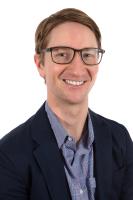Fraxel® & Chemical Peels
Overview
 Skin resurfacing is a procedure that removes the top layer of skin to allow the fresh, healthier, and smoother layer of skin underneath to become the new surface. There are a variety of skin resurfacing procedures that can improve fine lines or wrinkles, scars, acne scars, and brown spots (also called age spots or sun spots). After skin resurfacing, your skin will be soft and smooth.
Skin resurfacing is a procedure that removes the top layer of skin to allow the fresh, healthier, and smoother layer of skin underneath to become the new surface. There are a variety of skin resurfacing procedures that can improve fine lines or wrinkles, scars, acne scars, and brown spots (also called age spots or sun spots). After skin resurfacing, your skin will be soft and smooth.
Some patients are confused about what skin resurfacing can do. There are three kinds of wrinkles and skin folds, and each type requires a different treatment. The first are the kinds of wrinkles caused by gravity and loss of volume in the skin. In this case, the skin loosens and stretches, causing lines around the mouth such as marionette lines, folds of skin on the neck, and jowls. Skin resurfacing does not treat these signs of aging. They are best treated by dermal fillers such as Juvéderm Voluma® or facial surgery like a face and neck lift.
The second type of wrinkle is caused by repeated muscle movement, such as crow’s feet, frown lines between the brows, and some lines around the mouth. Botox® Cosmetic is the best non-surgical solution for these types of wrinkles because it reduces the muscle motion. Surgery can also often resolve these types of wrinkles.
The third type of wrinkle consists of the fine lines on the surface of the skin due to sun exposure, weathering, and aging. They are not caused by muscle movement, and lifting this skin in a face lift will only move the wrinkles, not smooth them. This third type of wrinkle is what skin resurfacing treatments address. Think of it like grime that builds up on a wall. In order to get rid of the grime, you have to scrub the wall. Moving the wall or spackling it will not get rid of the grime. These kinds of wrinkles are similar to that grime – you have to remove the top layer of the skin in order to get rid of where the wrinkles reside. The new, unaffected skin cells below the top layer will not have as many lines and wrinkles.
 At Summit Health, our surgeons perform all of these procedures except for Microdermabrasion, which is done by one of our licensed medical aestheticians. Chemical peels, laser skin resurfacing, and dermabrasion should all be done by a plastic surgeon with a thorough knowledge of the anatomy and how these treatments work on the skin.
At Summit Health, our surgeons perform all of these procedures except for Microdermabrasion, which is done by one of our licensed medical aestheticians. Chemical peels, laser skin resurfacing, and dermabrasion should all be done by a plastic surgeon with a thorough knowledge of the anatomy and how these treatments work on the skin.
The results of all skin resurfacing treatments are permanent. Once you take five years of aging off the skin, it will take a long time for that amount of damage to build up again. When and if you develop enough wrinkles to have a subsequent treatment, it can be done. Ideally, you will never have to have an intense skin resurfacing procedure again, as you will take great care of your skin, use sunscreen, and have regular facials and microdermabrasion treatments to maintain the youthfulness of your skin.
Ready to get started?
Your Skin Resurfacing Consultation at Summit Health
When you meet with us for your skin rejuvenation consultation, we will have an honest discussion about your desires, expectations, and concerns, as well as the limits and risks of the procedures. We will review your medical history and recommend options that can best help you achieve your goals. We will give you thorough written instructions to prepare for your surgery and will answer any questions you have.
At Summit Health, the patient experience is of primary importance to us. We customize every single procedure we do so that it is tailored to what is best for you and you alone. We will recommend the skin resurfacing procedure that we believe will give you the results you want, but there are other considerations, such as the amount of downtime you are willing to endure. Some skin resurfacing methods are more intense than others. They provide a remarkable result, even reducing numerous lines and wrinkles or eliminating deep scars and brown spots. However, the more intense and effective the procedure, the longer the recovery period. All of these factors should be considered before deciding on which procedure is best for you.
 When you make an appointment for a skin resurfacing consultation, we will discuss non-surgical solutions with you. If you think you might be interested in plastic surgery, please let us know when you call so that we can schedule a longer consultation with you to fill you in on all possible options to help you reach your goals for your appearance.
When you make an appointment for a skin resurfacing consultation, we will discuss non-surgical solutions with you. If you think you might be interested in plastic surgery, please let us know when you call so that we can schedule a longer consultation with you to fill you in on all possible options to help you reach your goals for your appearance.
If you have a history of cold sores or fever blisters, please let us know during your consultation. These sores can reactivate during skin resurfacing treatments and spread through the treated area. While you are still a candidate for skin resurfacing, we provide you with special medication prior to your appointment to prevent reactivation of cold sores.








